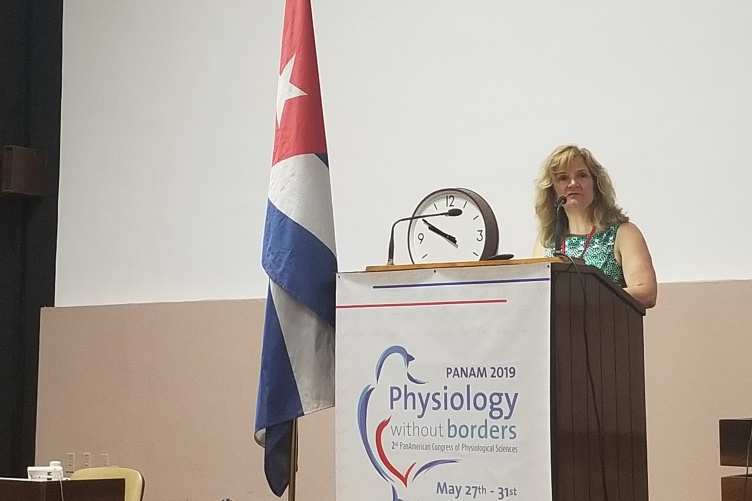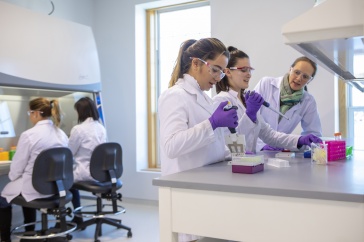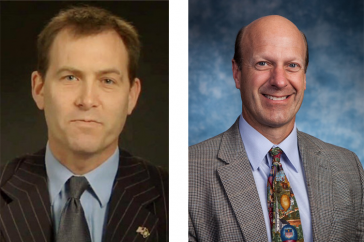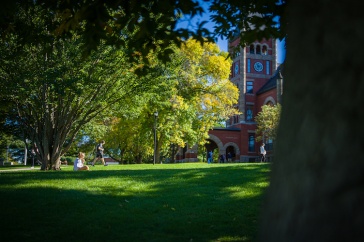
This summer, I had the opportunity to travel to Havana, Cuba and chair a symposium, thanks to funding from UNH and the American Physiological Society. Attending an international meeting is an important part of a scholar’s career because it provides opportunities to network with new colleagues from different countries. While every educator across the globe is unique, what unites us is the desire to effectively prepare our students for the next steps in their careers.
The symposium was part of the 2nd Pan American Congress of Physiological Sciences (PanAm19), which took place in the Havana International Convention Center in the last week of May. While this was the second PanAm meeting, it was the first one that I attended. Like all international meetings, the planning starts 1.5-2 years in advance, which is about the time it takes to first perform and publish research for an international audience, and then write and receive grants to attend the meeting. For the PanAm19 meeting, over 120 symposia proposals were submitted a whole year in advance and only 32 selected.
There were 413 attendees from 25 different countries, with the majority from the U.S., Cuba and Brazil. The last international meeting I participated in was the International Union of Physiological Sciences (IUPS) World Congress in Brazil in 2017, and much to my delight, some of the physiologists I had met there were also in attendance in Havana. It was wonderful to see them again.
I chaired one of two teaching symposia, titled Innovations in Teaching Physiology, which featured speakers I had selected from the U.S., Cuba and Brazil. As the chair, I began the session by welcoming everyone in Spanish. While the official language of the meeting was English, I felt it appropriate to recognize the home language of Cuba, and this effort was appreciated by many of the attendees. The first speaker gave an overview of the challenges of teaching physiology to undergraduates and professional students. The subsequent three speakers presented talks on the use of clickers, flipped teaching and role playing, and how these techniques are effectively used in the classroom to address the challenges of teaching difficult content while still engaging students.
While every educator across the globe is unique, what unites us is the desire to effectively prepare our students for the next steps in their careers.
The session was well-attended and attracted a lot of interest and specific questions were asked to each speaker about the implementation of these teaching techniques and the success level of the implementation.
Beyond my role as chair, I was able to attend many interesting symposia; two of particular interest were: Evolution and Development of Breathing Circuits in Mammals and Teaching Physiology: The Challenge of Motivating Students.
The first featured a talk on Evolutionary trends in central respiratory rhythm generation, which focused on the different neural control of breathing in amphibians, birds, reptiles and mammals. This topic is complex as some of these animals are aquatic and others strictly terrestrial; some tidal breathers and others intermittent. The neural circuitry that regulates the respiratory rhythm generator for some animals is still unknown.
The second symposium, Teaching Physiology: The Challenge of Motivating Students, included several talks by speakers from Argentina and the US. The talks focused on different techniques used to motivate undergraduate and medical students. A very effective workshop, Networking Promoting Collaboration Across Borders, provided a wonderful opportunity to meet new colleagues and discuss challenges, which, regardless of the country or academic program are consistently the same. These universal challenges include low attendance rates and difficulty motivating and engaging students. In addition, the physiology content that undergraduate, graduate and professional students need to learn can be complex and difficult. With this commonality of purpose, we shared ideas of what we have tried and our successes.
  |
| Exploring Havana in a classic DeSoto. |
During my stay, I explored the city of Havana each evening. The city is beautiful, and filled with beautiful architecture from the time of Spanish rule. In Old Havana, the historical section of the city, the narrow streets only allow for pedestrian traffic, which made for perfect evening strolls. One of my favorite parts was eating at different restaurants each night, and enjoying the constant live music throughout Havana. The restaurants I went to served delicious food in appropriate portions. I usually ordered the seafood, which was fresh and simply prepared. As we walked closer to the harbor, we met more tourists from a variety of countries, all enjoying the warm and humid weather.
An important part of international travel is experiencing the culture by meeting local people and visiting some of the more famous landmarks. Cuba has been a mysterious and intriguing country for many Americans. Most know that Ernest Hemingway had a house in Havana and wrote many of his famous books while living in the city. Memories of Hemingway are everywhere—at the bar in La Floridita, there is a bronze statue of Hemmingway sitting at the bar, where he was famous for ordering daiquiris without sugar. Even more bits of history: the restaurant Sloppy Joe’s, where the sloppy joe sandwich was invented, was also nearby, in addition to the iconic fort El Morro, or more formally known as El Castillo de los Tres Reyes Magos del Morro, which stands as a sentinel guarding the Havana harbor. El Morro was built in the late 14th century to guard the city against pirates and other invaders, it is the oldest fort in the Americas. The Habaneros are friendly and appreciated our efforts at speaking Spanish with them.
As a result of this opportunity, I made some new friends from Cuba and we planned future collaborations for education research and K-12 outreach. I look forward to returning to Cuba in the future and attending the 3rd PanAm meeting in Chile in 2023.
-
Written By:
Patricia Halpin | Associate Professor of Biological Sciences and Biotechnology, UNH Manchester | Patricia.Halpin@unh.edu



















































